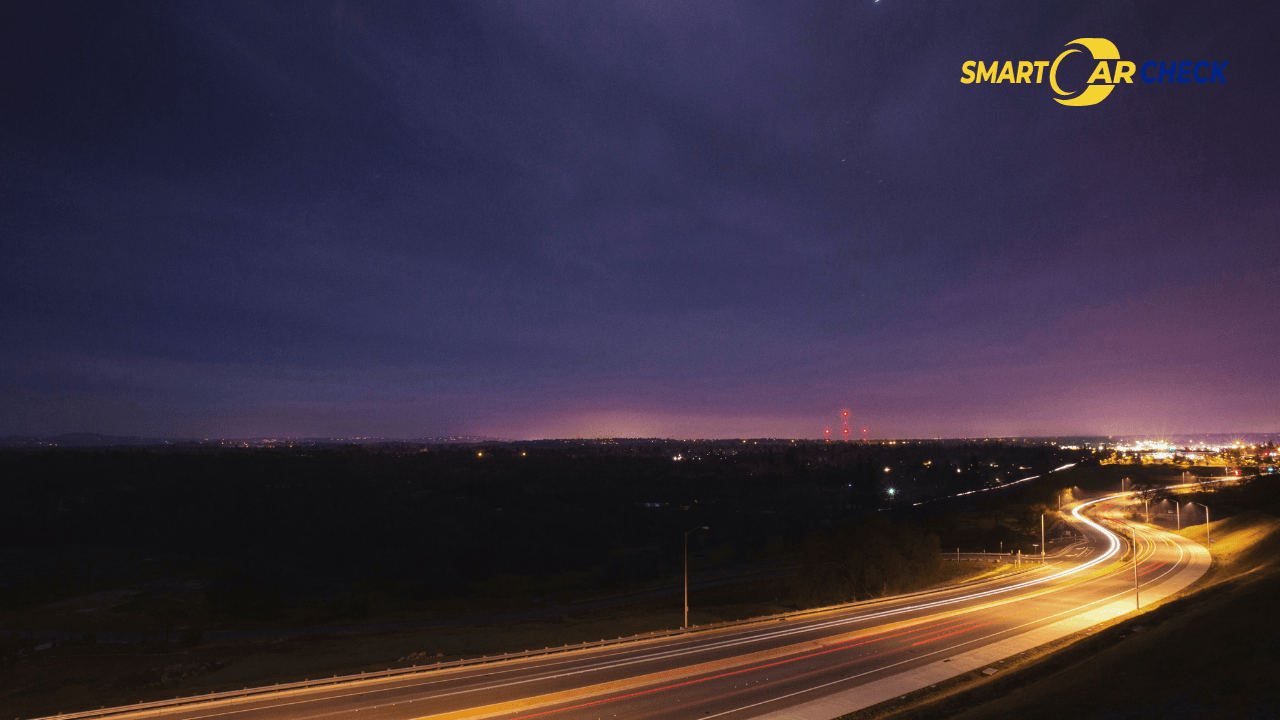Smart motorways have become increasingly common in many countries around the world. These innovative road systems aim to improve traffic flow and reduce congestion by using technology and variable speed limits. However, there is still some confusion and concern about how smart motorways work and whether they are safe. In this detailed guide, we will explore what smart motorways are, how they operate, and address some of the common misconceptions surrounding them.
What is a Smart Motorway?
Smart motorways are highways that use technology and active traffic management techniques to increase capacity and improve traffic flow. They are designed to monitor and control traffic in real-time, adapting to changing conditions and reducing congestion.
Types of Start Motorways
- Controlled Motorways: These have three or more lanes with variable speed limits and a hard shoulder that is only opened during peak traffic.
- Dynamic Hard Shoulder Running (DHSR): The hard shoulder is opened as an additional lane during busy periods.
- All-Lane Running (ALR): The hard shoulder is permanently converted into a running lane.
Smart Motorway Signs
Understanding smart motorway signs is crucial for safely navigating these roads. These signs convey essential information to drivers and help manage traffic effectively. Here are some common smart motorway signs and their meanings:
- Variable Speed Limit Signs: These signs display the current speed limit for a specific stretch of the smart motorway. Drivers are required to adhere to these limits to maintain traffic flow and safety.
- Lane Control Signs: Lane control signs indicate which lanes are open and closed. They often feature arrows indicating which lanes to use or avoid. Following these signs correctly is vital for safety.
- Red X Signs: A red X displayed above a lane indicates that the lane is closed, and drivers must not use it. Ignoring a red X is illegal and can lead to fines.
- Emergency Refuge Area Signs: These signs indicate the locations of emergency refuge areas. Drivers should be aware of these signs in case they need to stop in an emergency.
- Hard Shoulder Running Signs: On some smart motorways, the hard shoulder is temporarily opened for traffic during peak periods. Signs will indicate when the hard shoulder is available for use.
- Distance Marker Signs: These signs show the distance to the next junction or exit, helping drivers plan their lane changes and exits in advance.
- Lane Use Signs: Lane use signs may indicate specific lanes for certain types of vehicles, such as buses or high-occupancy vehicles. It’s important to follow these signs to maintain traffic order.
How Does a Smart Motorway Work?
- Traffic Monitoring and Control
- CCTV cameras and sensors are used to monitor traffic flow and detect incidents or congestion.
- Control centers receive real-time data and can adjust speed limits and lane configurations to optimize traffic flow.
- Variable Message Signs (VMS) display information to drivers, including speed limits, lane closures, and warnings.
- Emergency Refuge Areas (ERAs)
- ERAs are designated areas for drivers to stop in case of an emergency or breakdown.
- They are spaced at regular intervals along the motorway and marked with blue signs.
- Highways England recommends using ERAs only in emergencies and not for routine stops.
- Red X and Lane Closure
- A red X displayed on overhead gantries indicates a lane closure.
- Drivers must not drive in a lane marked with a red X and should move to an available lane as soon as it is safe to do so.
Common Misconceptions about Smart Motorways
- Despite the potential benefits, concerns surrounding smart motorways revolve primarily around safety:
- Lack of Emergency Access
- Some people believe that smart motorways do not provide sufficient emergency access. In reality, ERAs are strategically placed to ensure drivers have access to a safe stopping area in case of emergencies.
- Increased Risk of Accidents
- Concerns have been raised about the safety of removing the hard shoulder and allowing vehicles to use it as a running lane. Studies have shown that the risk of accidents on smart motorways is not significantly higher than on traditional motorways.
- Lack of Awareness and Understanding
- Many drivers are not aware of the rules and regulations specific to smart motorways. Improved education and awareness campaigns are needed to ensure drivers understand how to use smart motorways safely.
Are Smart Motorways Safe?
Smart motorways, a concept introduced to improve traffic flow and reduce congestion on major road networks, have been a subject of controversy and debate when it comes to safety. These motorways, found in several countries, including the United Kingdom, use technology to manage traffic and control vehicle speeds, often eliminating the need for hard shoulders. While proponents argue that smart motorways help optimize road capacity and reduce overall congestion, concerns about safety have loomed large.
Smart Motorway Cameras
Smart motorways have gained prominence as a solution to alleviate traffic congestion and enhance the efficiency of road networks. At the heart of these modern road systems are smart motorway cameras, which play a crucial role in monitoring and controlling traffic flow. These cameras serve various functions, all aimed at optimizing road safety and traffic management.
Types of Smart Motorway Cameras
There are several types of cameras used on smart motorways, each with specific functions:
CCTV Cameras: Closed-circuit television cameras are strategically positioned along the motorway. They serve a dual purpose, providing real-time footage for traffic management and surveillance for safety and security.
Speed Cameras: These cameras monitor vehicle speeds and can be used to enforce speed limits, ensuring that drivers adhere to the posted speed restrictions. Speed cameras are essential for maintaining safe traffic flow.
ANPR Cameras: Automatic Number Plate Recognition cameras capture images of vehicle registration plates. They are used for various purposes, including monitoring traffic flow, identifying vehicles involved in incidents, and enforcing congestion charges.
Variable Speed Limit Cameras: These cameras are responsible for displaying variable speed limits on overhead signs. They monitor traffic conditions and adjust speed limits as needed to manage congestion and improve safety.
Incident Detection Cameras: Equipped with sophisticated technology, these cameras are designed to identify incidents on the road, such as accidents or stalled vehicles. They play a critical role in alerting authorities and coordinating responses.
Smart Monitoring Traffic Flow
Smart motorway cameras continuously monitor traffic flow and provide valuable real-time data to traffic management centers. This information allows authorities to respond swiftly to incidents, adjust variable speed limits, and make informed decisions to optimize road capacity.
Incident Management
In the event of an accident or breakdown, smart motorway cameras are pivotal in managing incidents effectively. They provide immediate visual confirmation of an incident’s location and severity, enabling authorities to dispatch assistance promptly. Incident detection cameras, in particular, are programmed to recognize stopped or slow-moving vehicles, activating alarms and dispatching roadside assistance or traffic officers.
Enforcement of Traffic Laws
Speed cameras and ANPR cameras serve an enforcement function. They capture instances of speeding and monitor vehicles for compliance with traffic laws and regulations. Automated systems issue penalties to violators, promoting safer driving behavior and enhancing road safety.
Congestion Management
Smart motorway cameras are instrumental in managing traffic congestion. By monitoring traffic patterns and identifying bottlenecks, they enable traffic management centers to adjust variable speed limits and lane configurations to maintain smoother traffic flow.
Emergency Response Coordination
In the event of a serious incident, such as a major accident or fire, smart motorway cameras help coordinate emergency responses. They provide real-time footage to emergency services, allowing them to assess the situation before arriving at the scene. This helps responders allocate resources efficiently and minimize delays in critical situations.
Detection of a Stationary Vehicle by Smart Motorways
Detecting a stationary or stalled vehicle on a smart motorway is crucial for maintaining safety and preventing accidents. Smart motorways employ various technologies to identify vehicles that have come to a stop unexpectedly. These detection systems are designed to minimize the risk to stranded motorists and ensure a swift response from traffic management authorities.
- Radar-Based Systems: Radar sensors are often used on smart motorways to detect stationary vehicles. These sensors emit radio waves that bounce off objects in their path. When a vehicle comes to a stop, the radar sensor detects the absence of movement and sends an alert to the traffic management center. This information triggers the display of appropriate warnings on variable message signs, such as speed limit reductions or lane closures.
- CCTV Cameras with Computer Vision: Some smart motorway cameras are equipped with advanced computer vision systems that can identify stationary vehicles. These systems analyze the video feed from the cameras and use algorithms to detect unusual behavior, such as a vehicle stopping suddenly in a lane. When a stationary vehicle is detected, an alert is generated, and the incident is reported to traffic management personnel.
- In-Road Sensors: In-road sensors are embedded in the pavement and can detect the presence of vehicles. When a vehicle comes to a stop, the sensor registers the change in magnetic or electromagnetic field patterns and sends an alert to the traffic management center. This method provides accurate, real-time information about the location of the stationary vehicle.
- ANPR Cameras and License Plate Recognition: Automatic Number Plate Recognition (ANPR) cameras can also play a role in detecting stationary vehicles. By continuously monitoring the flow of traffic and analyzing vehicle movements, ANPR systems can identify vehicles that have stopped unexpectedly. When a vehicle’s license plate is captured repeatedly in the same location without corresponding movement, an alert is generated.
- Traffic Flow Algorithms: Smart motorway management systems often use algorithms that analyze traffic flow patterns. These algorithms can detect anomalies, such as a vehicle slowing down and coming to a stop when it should be moving at a consistent speed. When such anomalies are detected, traffic management centers are alerted to investigate further.
Detection of a Stationary Vehicle by Smart Motorways
Highways England provides a set of brief guidelines for utilizing a smart motorway effectively:
- Avoid driving in a lane marked with a ‘red X.’
- Adhere to the speed limit displayed on overhead gantries.
- Do not enter the hard shoulder, indicated by a solid white line, unless directed.
- A broken white line signifies a standard traffic lane.
- If your vehicle encounters issues, such as a warning light, try to exit the smart motorway promptly and locate a safe place to stop.
Conclusion
Smart motorways are an innovative solution to reduce congestion and improve traffic flow. By utilizing technology and active traffic management techniques, these highways adapt to changing conditions and optimize traffic flow in real-time. While there are concerns and misconceptions surrounding smart motorways, it is important to understand the smart motorway signs and their design and operation to use them safely and effectively.


